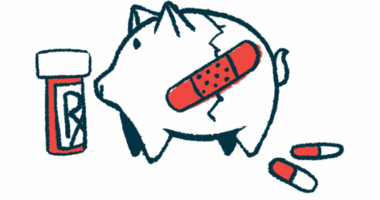Onpattro Treatment Improves Quality of Life in FAP Patients, Study Shows

Treatment with Onpattro (patisiran) improves multiple aspects of quality of life in people with familial amyloid polyneuropathy (FAP), findings from a Phase 3 clinical trial show.
The rapid deterioration seen in participants given a placebo illustrate the importance of starting FAP treatment as early as possible, scientists say.
The results were published in the journal Amyloid in a study, titled “Quality of Life Outcomes in APOLLO, the Phase 3 Trial of the RNAi Therapeutic Patisiran in Patients With Hereditary Transthyretin-Mediated Amyloidosis.”
FAP, also known as hereditary ATTR amyloidosis, is caused by mutations in the TTR gene, which leads to the buildup of transthyretin proteins that are toxic to multiple organs.
Onpattro works by reducing the production of transthyretin. The medication has been approved to treat FAP in multiple countries, including the U.S., the European Union, Japan, Canada, Brazil, and Switzerland.
The Phase 3 APOLLO trial (NCT01960348), sponsored by Onpattro’s developer Alnylam Pharmaceuticals, tested the safety and efficacy of the treatment in 225 adults with FAP. Participants randomly received either Onpattro (148 participants) or a placebo (77 participants), given by injection into the bloodstream every three weeks, for 18 months.
Previously reported results showed that the medication could effectively decrease the production of faulty transthyretin proteins and ease FAP symptoms.
Since FAP can affect multiple organ systems, it can have a wide impact on a person’s quality of life (QOL). As such, no single measurement of QOL can fully encapsulate the effects of FAP, or how a medication changes such effects.
In the new study, researchers analyzed data collected during the APOLLO trial for a variety of QOL measurements, namely:
- The Norfolk Quality of Life-Diabetic Neuropathy (Norfolk QOL-DN) questionnaire, which measures QOL associated with nervous system damage. Higher scores indicate worse symptoms.
- The EuroQoL 5-dimensions 5-levels (EQ-5D-5L) questionnaire, which measures self-reported health across five domains (mobility, self-care, usual activities, pain/discomfort, and anxiety/depression). Lower scores indicate poorer health.
- The EuroQoL visual analog scale (EQ-VAS), which is a self-reported survey of overall health on a scale from 0 (worst possible health) to 100 (best possible health).
- The Rasch-built Overall Disability Scale (R-ODS), which measures the impact of disease on daily living and social engagement. Lower scores indicate more severe disability.
- The Composite Autonomic Symptom Score-31 (COMPASS-31) questionnaire, which measures autonomic symptoms — symptoms regulated by the nervous system without conscious thought, such as bowel movements and heart rate. Higher scores indicate worse symptoms.
All five measurements showed the same trend: prior to the start of the trial, scores in the Onpattro and placebo groups were similar. But after 18 months, treatment with Onpattro led to either stable scores or indicated less severe symptoms, unlike the worsening QOL reported by patients taking the placebo.
For instance, after 18 months, Norfolk QOL-DN scores decreased by a mean of 6.7 points in the Onpattro group, while in the placebo group such scores increased by 14.4 points.
Likewise, the EQ-5D-5L score was 0.03 points higher (better) with Onpattro and 0.17 points lower with the placebo, while EQ-VAS increased (improved) by 2.4 points in the therapy group and decreased (worsened) by 7.1 points in the placebo group.
In R-ODS, mean scores did not change in the Onpattro group, but decreased (worsened) by an average of 8.9 points in the placebo group. In turn, the reduction in average scores on COMPASS-31 was 7.5 points greater in the Onpattro group compared to the placebo group, indicating benefits with treatment.
All differences between Onpattro and placebo were statistically significant. Similar results were found in the 126 participants (90 on Onpattro and 36 on a placebo) who had heart involvement.
Notably, benefits were evident as early as nine months of treatment (when the first assessment was made). Overall, the differences favoring Onpattro were driven largely by worsening scores in the placebo group.
“The poor QOL observed in patients with this disease at baseline and the subsequent rapid deterioration without intervention, particularly seen at the earliest stages of disease, demonstrate the importance and benefit of diagnosing the disease as early as possible as well as initiating treatment early in the disease course,” the researchers wrote.
Of note, Adelphi Communications, funded by Alnylam, provided editorial assistance. Several study authors received grants, compensation, and non-financial support from Alnylam, or served as consultants for the company.






